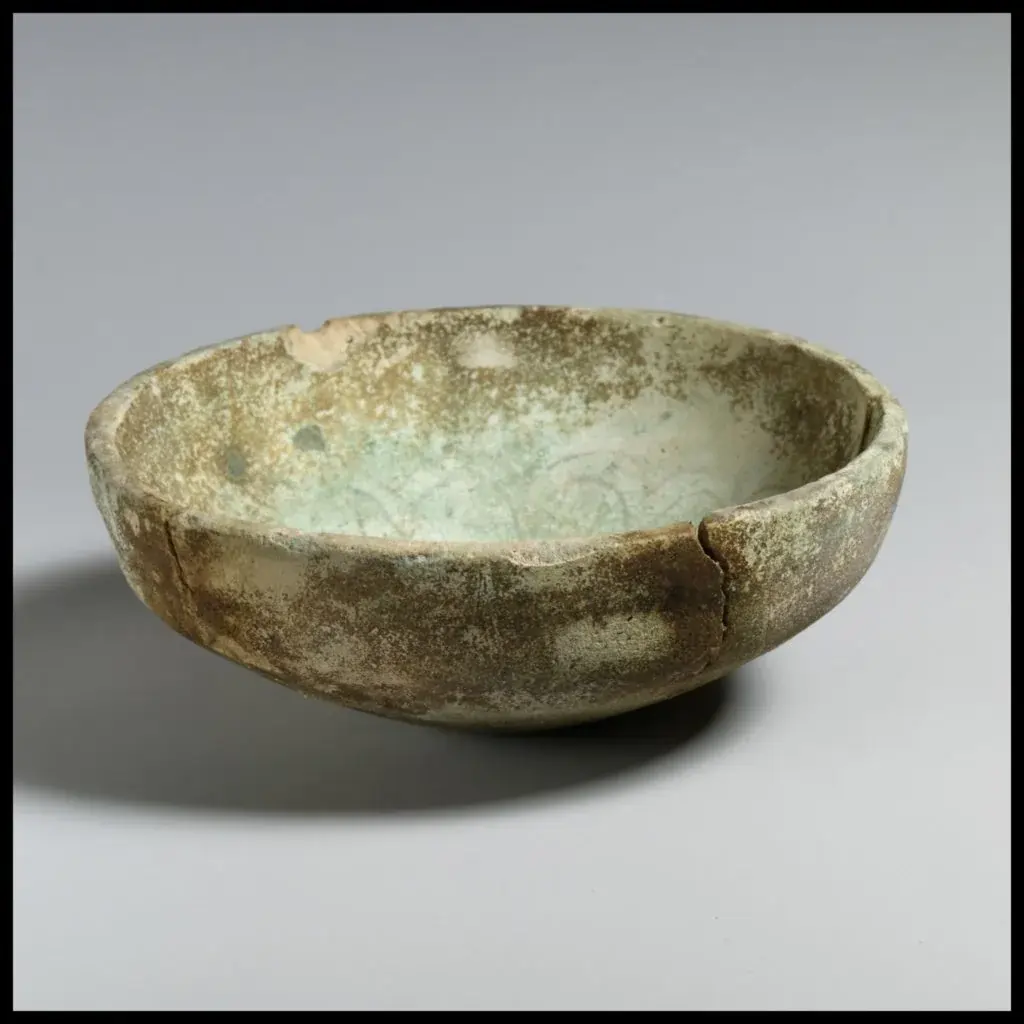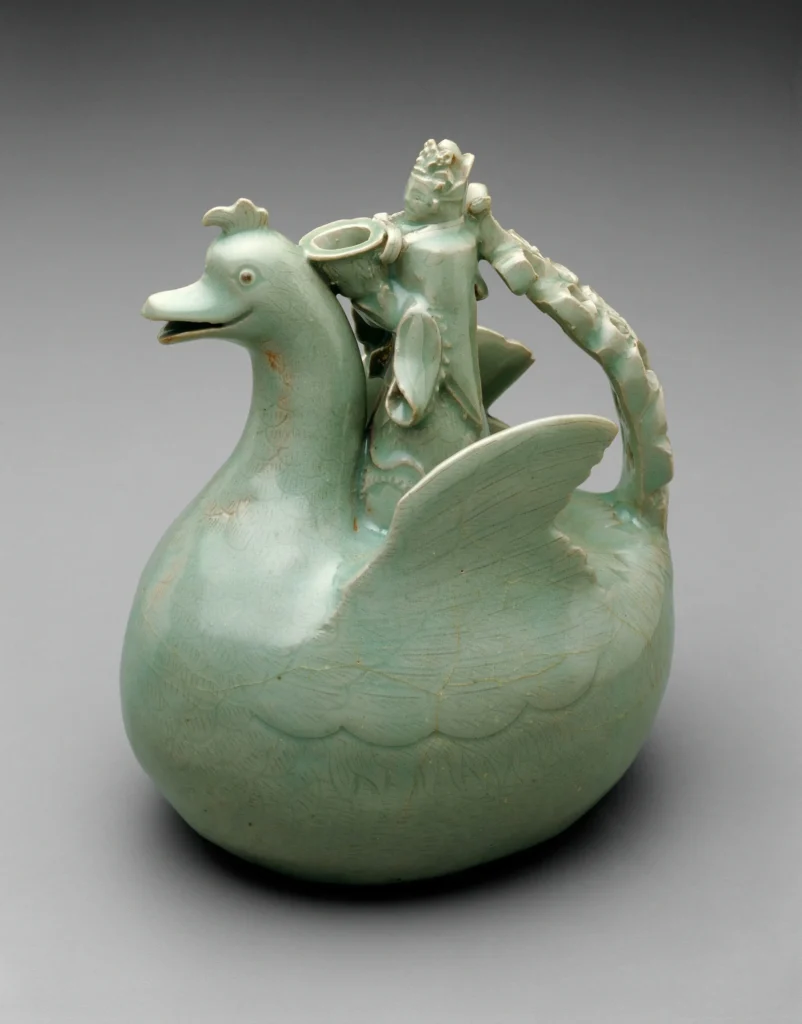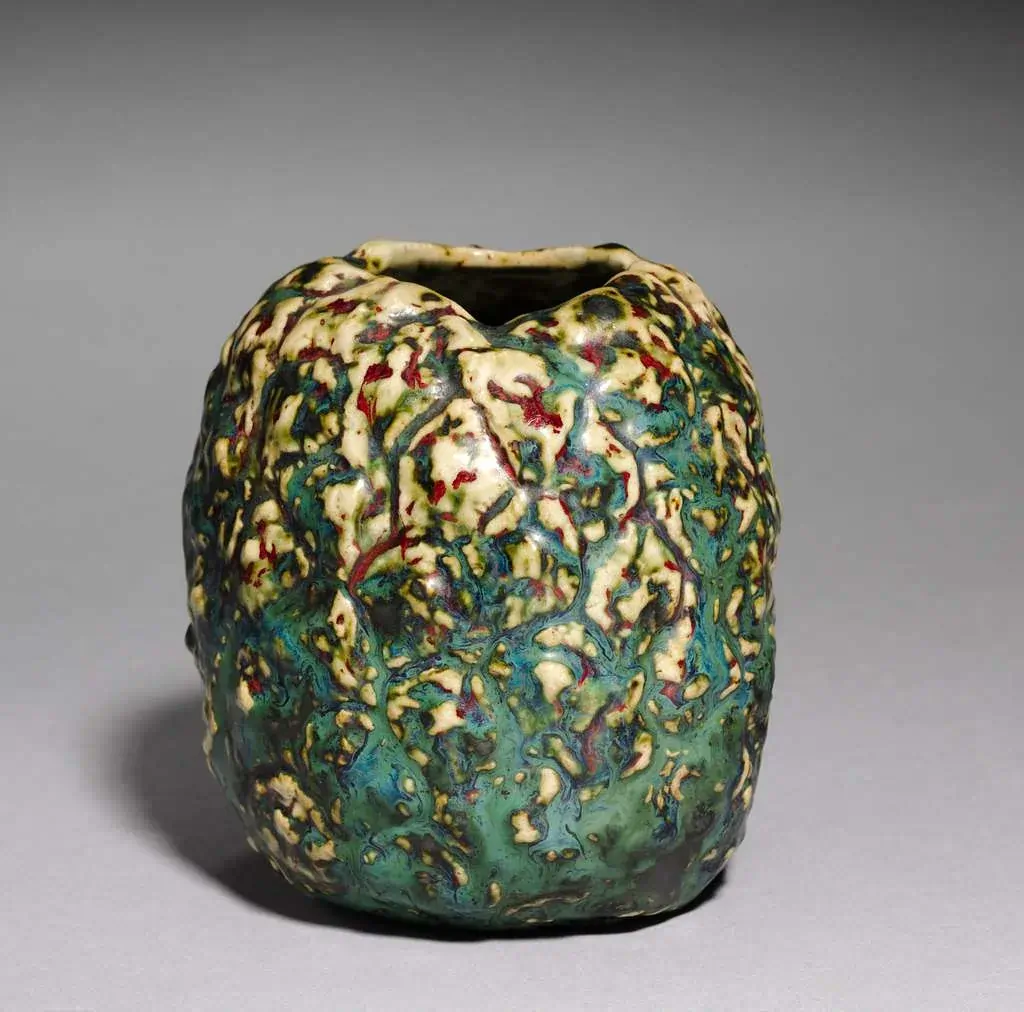For, more than 6000 years now and across civilizations that have come and gone over time ancient faience bowls have managed to endure and narrate fascinating tales of human ingenuity.
The beautiful containers, with their exteriors and bright blue green colors embody one of the earliest endeavors of humanity in producing artificial substances. A faience bowl is not a vessel. It stands as a tribute, to the innovation and artistic talent of ancient times. What captivates us about these objects is how they reveal the expertise possessed by early artisans who crafted them without the aid of contemporary tools or scientific insights.
Egyptian faience is widely recognized for its material characteristics that are still being investigated today through scientific research methods. Our studies have unveiled the manufacturing procedures crafted by artisans who possessed meticulous control, over materials and firing environments. This detailed manual delves into the makeup of faience products and delves, into the diverse production methods employed across different regions alongside preservation techniques that contribute to the enduring value of these antiquities.
Chemical Composition and Material Properties
Let’s kick off our exploration of faience bowls by delving into their one of a kind makeup! At the heart of these bowls lies a blend of quartz or sand crystals mixed with proportions of sodium and potassium oxides as well, as calcium and magnesium oxides.
Core ingredients and ratios
The primary components we find in faience include:
- Ground quartz or sand (primary base)
- Alkaline salts (from natron or plant ash)
- Lime (as a stabilizer)
- Metallic colorants (for distinctive hues)
Studies have shown that firing temperatures needed to reach between 870°C and 920°C for optimal results. If temperatures exceeded 1000°C, we observe that the glaze would bubble excessively and flow off the object.
Glazing compounds analysis
During our analysis of the glazing compounds properties we discovered that the proportion of Cu₂0 and Ca0 is key, in influencing the hue produced. If the ratio surpasses 5 then a blue shade is achieved; if it falls below 5 then green tones emerge. Furthermore different elements when introduced result, in color variations;
| Colorant | Resulting Color |
| Copper | Blue-green |
| Manganese | Black/purple |
| Cobalt | Blue |
| Lead antimonite | Yellow |
Physical characteristics and durability
We found that faience material shows characteristics – starting thick and then becoming more fluid when manipulated over time. The inner part is noticeably crumbly and spongy. Is made up of quartz grains with no apparent clay fragments.
Faience bowls are made durable by the interplay of alkali and lime, during the firing process. The acts as a flux while lime stabilizes the material by reacting with silica to create a protective glaze coating on the surface of the bowls. It’s worth mentioning that faience is not as robust as stone ware and may be more susceptible to damages, like chipping or cracking.
The unique brightness and translucency we see in the interaction of light, at the boundary between the core and glaze is something we continue to appreciate until this day thanks, to the blend of materials and the advanced knowledge of glazing methods passed down by craftsmen from times.
Manufacturing Techniques through History
Through our exploration of crafting methods we have found that creating faience bowls showcases a display of intricate ceramic craftsmanship.
Early production methods
we have discovered that the early artisans used a method of making the figures by hand modeling which is similar to stone be working seen and that not the pottery craftsmen making. Mainly In depended the on Predynastic modeling, period scraping it and can grinding. The paste was difficult to work with because it was a thixotropic material, which means that it was thick at the beginning and then it became more like a liquid when worked on.
Evolution of firing techniques
Our research reveals a significant advancement in firing methods over time. We’ve identified that successful faience production required precise temperature control between 870°C and 920°C. The firing process involved three primary glazing methods:
- Efflorescence: We mix water-soluble alkaline salts with powdered quartz and colorants, allowing salts to migrate to the surface during drying
- Cementation: We bury the formed object in glazing powder with high flux content
- Direct application: We apply the glaze mixture directly to the object’s surface
Quality control measures
Through our analysis of workshop evidence, we’ve identified sophisticated quality control practices. In Ptolemaic workshops, we’ve found that artisans implemented several key measures:
- Raw material selection: High-quality materials were carefully chosen and prepared
- Mold precision: Objects were formed using specialized upper and lower molds
- Temperature monitoring: Careful control prevented excessive bubbling and glaze flow
Over time we’ve noticed a trend, towards organization in workshops. The examination of artifacts, from Tell Atrib shows craftsmanship evident in every step of the production process. With temperatures surpassing 1000°C it was clear that proper temperature management was crucial as the glaze tended to bubble and slide off the object.
In our studies using methods and practices we found out that the cementation process usually gave the outcomes in terms of quality results overall. Additionally we learned that the effectiveness of production was greatly influenced by the surrounding environment. For the technique, which specifically needed extremely dry conditions to function properly.
Regional Variations and Styles
In our study of regions we discovered variations, in how ancient societies tailored the making of faience bowls to fit their distinct cultural backgrounds.
Egyptian distinctive features
Egyptian faience bowls have a meaning shown through their choice of colors, especially the distinctive blue green shades that hold specific significances.
- Blue represented the Nile and celestial waters
- Green symbolized regeneration and rebirth
- Purple indicated royal status and power
Through our examination of artifacts we have noticed that artisans were able to create these hues by manipulating copper oxides in both oxidizing and reducing environments. The unique Egyptian aesthetic focused on creating finishes reminiscent of valuable gems such, as turquoise and lapis lazuli.
Mediterranean adaptations
When we explore the styles, in the Mediterranean region with a focus, on Minoan Crete’s artistry during the time period spanning 1700 to 1480 BC; we notice changes influenced by Egyptian methods. A remarkable Minoan development that stands out is the creation of plaques adorned with paste set into gray or brown surfaces.
The Minoan craftsmen developed their distinctive coloring methods:
| Colorant | Atmosphere | Result |
| Copper | Oxidizing | Bright turquoise |
| Manganese | Oxidizing | Purple |
| Iron | Reducing | Blue-green |
Near Eastern influences
Through our exploration of cultures, in the Near East region we have come to understand that although the origins of this technology can be traced back to Egypt or nearby areas each locality has infused its unique traits into its development. Our research has unveiled traces of faience artifacts being exchanged across these territories which sparked a cross pollination of advancements and bespoke modifications, in each locale.
During the Ptolemaic era there were advancements, in crafting faience bowls with a blend of Egyptian and Greek styles along, with Oriental influences being observed in their decoration patterns. The research indicates that certain designs were crafted concurrently in both pottery studios and dedicated faience workshops.
In our study of workshop findings we discovered that differences, between regions went beyond looks alone. Each area created production methods tailored to suit their surroundings. For example we noticed that the efflorescence technique thrived in environments; this clarifies why particular methods succeeded in particular regions but not in others.
Modern Scientific Analysis Methods
Thanks, to cutting edge techniques today we can delve into the mysteries of ancient faience bowls, with accuracy like never before! Our state of the art analytical methods have completely transformed our insights into these relics.
Spectroscopic examination techniques
We employ multiple complementary methods to analyze faience bowls. Our primary tool is the Scanning Electron Microscopy (SEM) with Energy Dispersive Spectrometry, which we operate at 20 kV acceleration voltage with an 80 µA beam current. This allows us to examine the microstructure and chemical composition simultaneously.
We’ve found that X-ray Fluorescence (XRF) analysis reveals fascinating details about the quartz-rich body features and their defined boundaries. Our research shows that combining these techniques provides the most reliable method for determining glazing techniques.
Dating methodologies
We utilize several dating approaches to establish accurate chronologies:
- Chronometric (absolute) dating
- Provides specific dates or date ranges
- Includes radiocarbon and archaeomagnetic methods
- Relative dating
- Establishes sequential order of artifacts
- Uses stratigraphy and seriation techniques
Our latest methods can date pottery fragments within remarkable precision – as close as 138 years, specifically around 3600 BC for certain specimens.
Material composition studies
We conduct detailed compositional analysis using sophisticated equipment. Here’s how we analyze different aspects:
| Analysis Type | Purpose | Key Finding |
| TG-DSC | Thermal properties | 30mg sample size optimal |
| XRPD | Crystal structure | Identifies mineral phases |
| SEM-EDS | Surface morphology | 7.7mm working distance ideal |
In our research findings indicate that faience bowls do not feature glazes as once believed; instead they are coated with soda or mixed alkali glazes containing inter particle glass phases. Our examination suggests that the optimal firing takes place within the temperature range of 870°C to 920°C.
We have made strides, in destructive testing techniques (NDTs) especially in identifying internal flaws accurately using ultrasonic testing combined with specific software solutions; now we can see internal irregularities with exceptional clarity thanks to this technological breakthrough which is especially useful for inspecting delicate faience bowls without causing any damage, to them.
Our studies have revealed that using a bonding material to the gel used in ultrasound is vital, for achieving precise outcomes in ultrasonic examinations. We meticulously choose substances that do not linger after use to safeguard these artifacts while acquiring insights, into their inner composition.
Conservation and Preservation
Preserving pottery bowls demands our focus on the environment and proper handling techniques honed through extensive museum work and scientific studies over time.
Environmental control requirements
We maintain strict environmental parameters to protect faience bowls. Our research shows that optimal preservation requires temperatures between 15-25°C and relative humidity (RH) between 40-60%. We’ve found that sudden changes are particularly damaging, so we limit fluctuations to:
- Temperature variations: Maximum 4°C within 24 hours
- Relative humidity shifts: No more than 5% daily
For unstable glass components, we maintain even tighter RH control between 40-50%. Our experience shows that higher humidity ranges increase the risk of weeping, while levels below 30% can cause permanent cracking.
Restoration techniques
We’ve refined our restoration approaches based on decades of conservation experience. Our current practices include:
| Treatment Type | Modern Method | Historical Method |
| Adhesives | Paraloid B-72 | Shellac (pre-1975) |
| Filling | Microballoons with B-72 | Plaster with protein glue |
| Cleaning | Mechanical with soft brushes | Acid solutions |
When dealing with salt contamination, we implement careful desalination procedures. We’ve learned that fluctuating humidity can cause salt crystallization, leading to significant damage to the glaze and core material.
Display considerations
We implement comprehensive display protocols to ensure long-term preservation. Our research indicates that proper exhibition requires:
- Light Control
- UV filters on all light sources
- Limited exposure to natural light
- Regulated lighting levels in exhibit spaces
- Physical Protection
- Exhibit enclosures to protect from dust and pollutants
- Physical barriers between objects and visitors
- Proper mounting systems that lift objects off the floor
We found that metal cabinets are better, than display cases because wood can release harmful organic acid vapors into the environment. When it comes to storage and display supports we opt for materials, like polyethylene foam sheeting of fibrous padding that could potentially damage delicate surfaces.
In our efforts to protect artworks and artifacts better over time We have noticed that storing them poorly and not preserving them correctly can cause the colors, in the layers to change. We pay attention specifically to how copper chloride compound are forming as they may signal ongoing decay processes.
Through our work, in preserving faience objects over time we have learned that the fragility of these artifacts is intricately linked to how they were crafted and formed. Structures created through methods such, as application or cementation tend to exhibit interparticle glass bonding making the core material more delicate and necessitating attention when it comes to their handling and exhibition.
Conclusion
Throughout history. Across the ages beautiful ancient faience bowls showcase the craftsmanship of humans. These works of art speak to the skills and creativity of craftsmen spanning, over six thousand years. Our in depth study uncovers the knowledge and expertise possessed by these artisans from their meticulous choice of materials, to their mastery of intricate firing methods.
In our studies far we’ve discovered how artisans, in the past managed to perfect the mixture of crushed quartz with alkaline salts and metallic dyes to produce breathtaking vessels that could compete with precious gems in beauty and craftsmanship The way they crafted these objects using different glazing techniques like efflorescence cementation and direct application showcases their impressive skills and expertise, in manufacturing.
Different regions, in Egypt and the Mediterranean area have their ways of using these methods in ways that reflect their beliefs uniquely and add special characteristics to them as well. When it comes to these artifacts different insights are still being discovered through scientific analysis and efforts to preserve them are being carefully maintained for the benefit of generations to come.
The ancient vessels are not just containers; they symbolize the progress and artistic dreams of past civilizations. Through our exploration of faience bowls, with techniques we come to understand and admire the insightful wisdom of our predecessors, who had remarkable knowledge even without todays scientific advancements.
FAQs
Q1. What is the significance of faience in ancient cultures? Faience was highly valued in ancient cultures, particularly in Egypt, where it was considered magical and associated with the sun’s eternal shimmer. It was used to create sculptures, vessels, jewelry, and ritual objects that were believed to possess powers of rebirth and eternity.
Q2. How was faience manufactured in ancient times? Ancient artisans created faience using a mixture of crushed quartz or sand, alkaline salts, lime, and metallic colorants. They employed three main glazing techniques: efflorescence, cementation, and direct application. The firing process required precise temperature control between 870°C and 920°C to achieve the desired results.
Q3. What are the distinctive features of Egyptian faience bowls? Egyptian faience bowls are characterized by their bright, lustrous surfaces that often mimic precious stones like turquoise and lapis lazuli. They typically feature blue-green hues, which symbolized the Nile, celestial waters, and concepts of regeneration and rebirth in Egyptian culture.
Q4. How do modern scientific methods contribute to our understanding of faience bowls? Modern analytical techniques such as Scanning Electron Microscopy (SEM), X-ray Fluorescence (XRF), and various dating methodologies allow researchers to examine the microstructure, chemical composition, and age of faience bowls with unprecedented precision. These methods have revealed new insights into ancient manufacturing techniques and material properties.
Q5. What are the key considerations for preserving faience bowls? Preserving faience bowls requires careful environmental control, including maintaining temperatures between 15-25°C and relative humidity between 40-60%. Proper display techniques involve using UV filters on light sources, protecting objects from dust and pollutants, and using inert materials for storage and support. Restoration techniques have evolved to use modern adhesives and filling materials that are more compatible with the delicate nature of faience.



